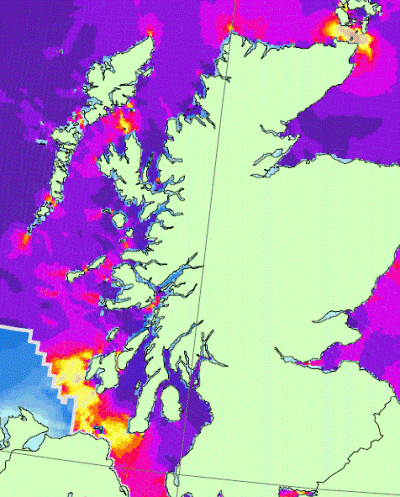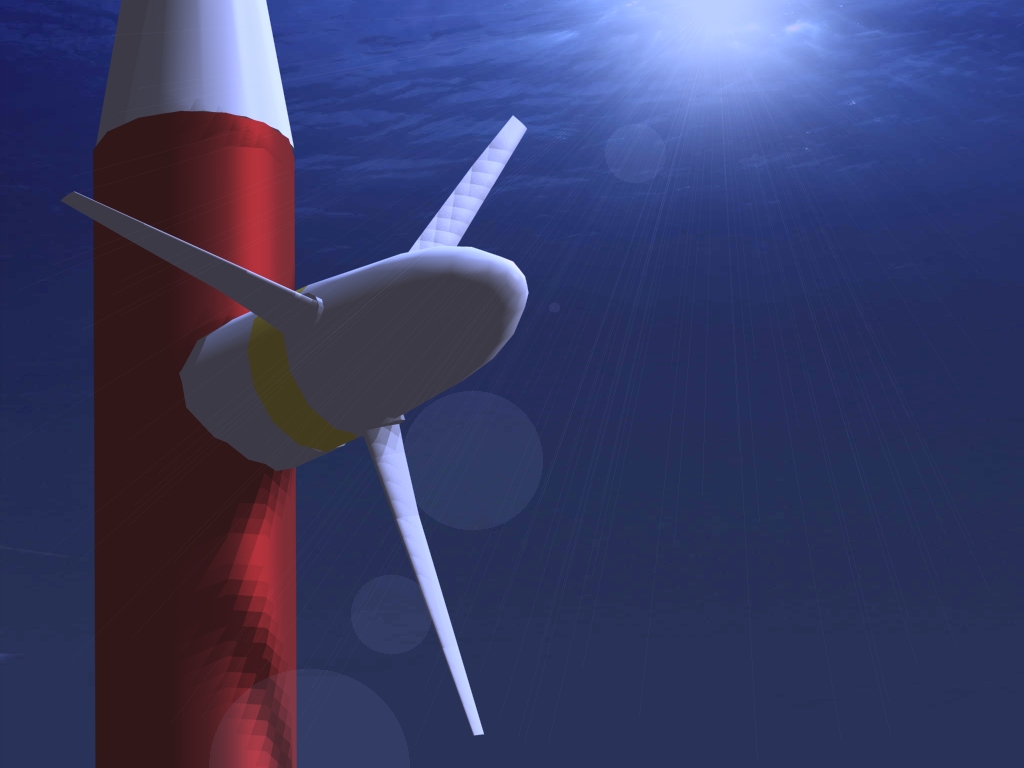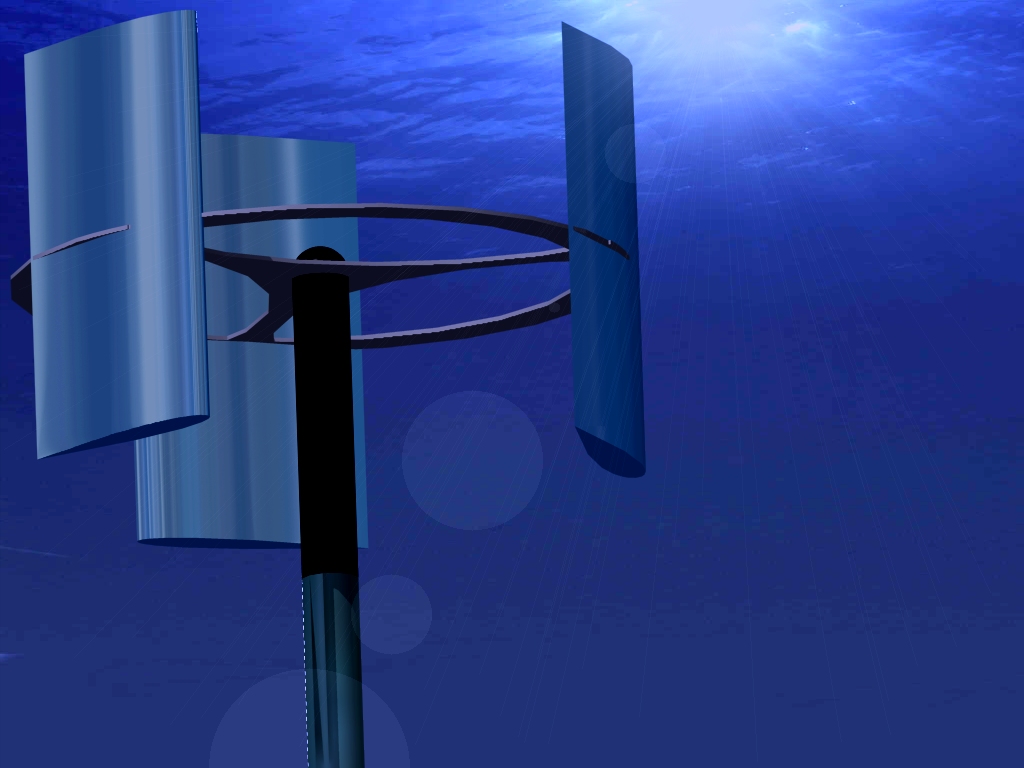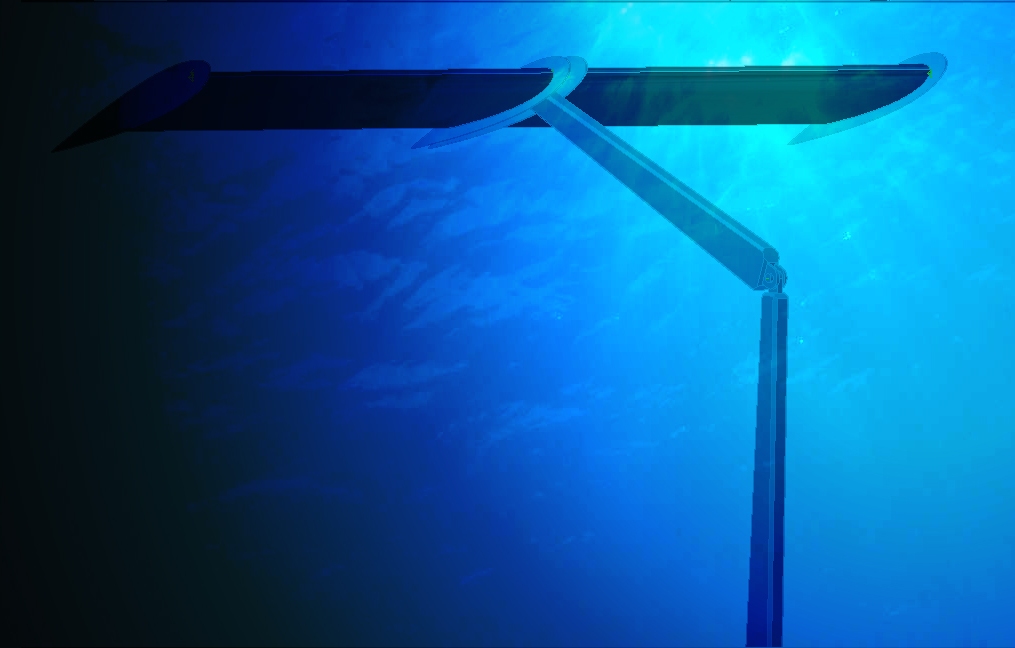Marine Current Energy
The tide is the source of "marine current" or "tidal stream" energy. Marine currents refer to a moving mass of water.
'Tides and tidal currents are generated by gravitational forces of the sun and moon on the earth's waters. Due to its proximity to the earth, the moon exerts roughly twice the tide raising force of the sun.The gravitational forces of the sun and the moon create two "bulges" in the earth’s oceans: one closest to the moon, and other on the opposite side of the globe. These "bulges" result in the two tides (high water to low water sequence) a day - the dominant tidal pattern in most of the world's oceans' (1).
Useful energy can be extracted from marine currents using completely submerged turbines and hydrofoil devices. Marine current technology shares the same principle as wind turbines by using the kinetic energy of moving fluid and transferring it into useful rotational and electrical energy.
If further information is required, a clear explanation of tidal currents and an introduction to marine current energy can be found the following links:
- Tidal Principles, Marine Current Energy Baseload Supply Strategy for Scotland Project, Strathclyde, 2003-2004.
- Tides and Water Levels, NOAA's National Ocean Service
- Marine Current Energy, World Energy Council, Survey of Energy Resources
Resource
As many of the strongest tidal currents are located in shallow waters or through narrow channels that connect large areas of water the coastline and islands of the West of Scotland are an ideal location for exploiting tidal currents (1). General Site Selection PrinciplesThe DTI (3) suggests the following higher currents are only found around certain features and therefore establishes principles for selecting sites of potentially high tidal currents and therefore good energy sites. Higher currents are only found around certain features such as:
|
 FIG:Tidal
Current Velocity (DTi,Tidal Atlas) FIG:Tidal
Current Velocity (DTi,Tidal Atlas) |
The DTI (3) states that,
‘Using these observations, large-scale maps can be used to predict possible sites, but in many places there is insufficient published data to verify whether an actual site is suitable. As marine current exploitation develops, there will be a need for a detailed inventory of potential sites. On small-scale maps, areas that do have high currents appear very small, though in reality each one may be several kilometres long in the direction of flow, and have space for many turbines, potentially generating tens or even hundreds of megawatts. Many suitable areas are several kilometres from the shore, and would be suitable for development as tidal farms, though they would be prohibitively expensive for a single, isolated turbine.’
The above principles can be used to select sites for analysis
in addition to utlising the tidal current maps produced by DTI(4)
back to top
Technology
'Marine current energy is in the early stage of development, with only a small number of prototypes and demonstration units having been tested to date. There are no commercial grid-connected turbines currently operating' (2).
The most common types of tidal current capture devices are variants of horizontal axis or vertical axis turbine. There are a variety of marine current energy capture devices that are also being investigated, however this project will only consider the following three types of technology in there generic form:
- Horizontal axis turbine(axial flow turbine)
- Vertical axis turbines (cross flow turbine)
- Oscillating Hydrofoil
 |
Horizontal axis turbineThis is design is similar in concept to the widespread horizontal axis wind turbine and is the most common turbine concept.The blades turn in the tidal stream and the higher density of water means that although the blades are smaller and turn more slowly, they still deliver a significant amount of power (5). Axial flow rotors are used to drive a generator via a gearbox similar to a hydro-electric or wind turbine.The power units of each system are mounted on hydrofoils either side of the tubular steel monopile. To increase the flow and power output from the turbine, concentrators (or shrouds) may be used around the blades to streamline and concentrate the flow towards the rotors. |
 |
Vertical axis turbineVertical axis turbine that operate in marine currents are based on the same principles as the land based Darrieus machines, named after the French engineer Georges Darrieus who patented the design in 1931. A Standard darrieus is characterised by its troposkein (eggbeater) shaped blades.These are tradionaly incorporated in wind darrieus devices to alleviate centrifugal forces encountered at high rotational speeds. Underwater rotational speeds are likely to be lower and hence our darrieus is a straight bladed H type darrius. (6) |
 |
Oscillating HydrofoilStingray uses a hydrofoil, similar to an aeroplane's wing but in water, to collect energy from the tide.In this design, hydrofoils have their angle relative to the water stream altered. Lift and drag forces cause the arm to oscillate, and a hydraulic cylinder attached to the main arm subsequently extends and retracts pumping high pressure oil to a generator(1). This oil passes through a hydraulic turbine which drives a generator to produce electricity. Stingray is a seabed mounted machine, designed for use in water up to a depth of 100m(5). |
Compared with other renewable technologies, there has been a little investment and research into utilising marine current energy for power generation. However marine current energy is one of the most promising new renewable energy sources, and is deserving of further investment. Furthermore, the knowledge to combine existing technologies to utilise marine current energy for power generation is now available (2).
However there are a number of issues that exist in the tidal energy industry and need to be addressed:
- Tidal data and selecting sites - Insufficient site-specific data and so selecting sites based on tidal current atlases can be problematic
- Selecting technology - As the industry is fairly new, technology confidentiality makes comparison of the available technology difficult
- Planning permission - Gaining site permission is a very complex process involving numerous governing bodies each with their own criteria and agenda
- Environmental Impact - There are a number of environmental impacts that technology implementation and energy extraction could cause to the local environment, the extent of which is yet unknown
- Transmission issues - Once the power is extracted form the tidal currents, delivering it to the customer is a very costly and complex process due the distances and subsea cabling issues
It is likely that water turbines will initially be deployed in island or coastal communities with strong marine currents and which are isolated from national grid systems, where they are most likely to offer a cost-effective alternative. However, marine currents have the potential to supply significant quantities of energy into the grid systems of many countries. As interest grows, marine current energy is likely to play an increasing role in complementing other energy technologies and contributing to the future global energy supply mix (2)
References:
- Marine Current Energy Baseload Supply Strategy for Scotland Project, Strathclyde, 2003-2004.
- Marine Current Energy, World Energy Council, Survey of Energy Resources
- DTI Renewables, Development, Installation and Testing of a Large Scale Tidal Current Turbine, T/06/0021/00/REP, 2005
- Atlas of UK Marine Renewable Energy Resources, ABPmer, The Met Office, Garrard Hassan, Proudman Oceanographic Laboratory, 2004
- British Wind Energy Association, Marine Renewable Energy
- Danish Wind Industry Association, Vertical Axis Wind Turbines
Go back to Contents

 Home
Home 
